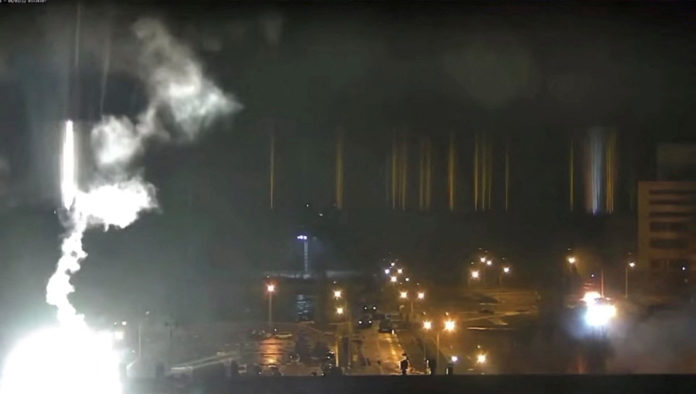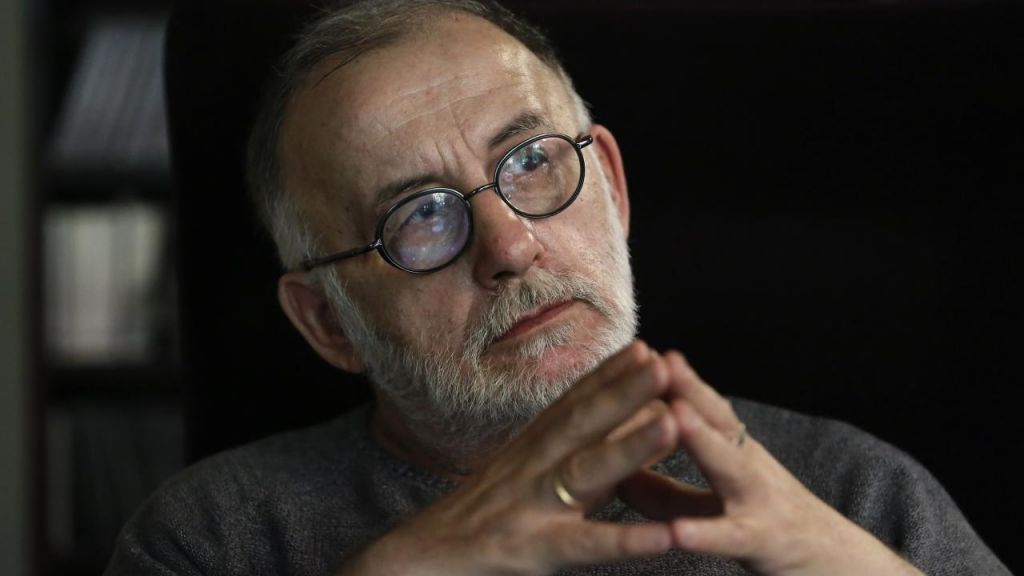Electra Kleitsa
On March 4, the news about the explosion and fire at the Ukrainian nuclear power plant in Zaporizhzhia, now under Russian control, caused concern throughout Europe. According to local authorities, the fire was soon contained and radioactivity levels in the area did not rise. But the terror of a possible nuclear accident is still haunting the world. Even more so since, instead of shutting down nuclear plants, there are attempts to build new ones, and even upgrade them to “green” energy sources.
Is nuclear power a tangible answer to the energy crisis?
Europe and the rest of the world are experiencing the effects of the energy crisis that has been going on for several months before the war in Ukraine broke out. The EU has already, since the beginning of the year, started discussing the possibility of classifying nuclear energy as “green”. The same goes for natural gas, despite the fact that it is a fossil fuel whose use is causing a significant impact on the environment. Such a development would lead to a significant increase in the number of nuclear plants on the continent. Even more so, because energy sources designated as “green”, are being subsidised by the state and the EU and receive several incentives for expansion.
This debate is taking place in the context of promoting Europe’s energy self-sufficiency and has been going on for several months, yet discussions are inevitably intensified because of the war. The EU is nowadays largely relying on Russia for its gas supplies (40% of the total consumption). Europe is constrained to look for alternatives, out of the fear that the Ukraine conflict would grow more intense and therefore limit or shut down this partnership. They have a target to completely get rid of Europe’s dependence on Russian gas by 2030.
Small “harmless” nuclear reactors?
A new “trend” that seems to be emerging in the nuclear energy market is about “Small Modular Reactors” (SMRs) and is gaining ground instead of large nuclear plants. According to the International Atomic Energy Agency (IAEA), this technology is cheaper, more flexible, allows for reactors to be installed in a wider range of places than the traditional nuclear power plants, and is also considered safer. Thus, the IAEA is introducing this new technology as the modern answer to pollutant fossil fuels and is classifying it as an “environmentally friendly, alternative energy source”.
The USA, where 20% of energy is produced in nuclear power plants, is moving towards the expansion of this new technology, and, according to estimations, there are at least 70 such reactors under approval or under construction around the world. Britain is currently in the process of approving the first small nuclear reactor at its Rolls Royce facility and Poland plans to have its own in the next few years.
Although proponents of small reactors portray them as safe, things are more complicated. To begin with, size is the only essential difference they have compared to traditional reactors. The way they function remains the same, that is splitting the atom of a chemical element (e.g. uranium, plutonium, etc.) to release energy. A key difference is that the cooling medium for small modular reactors is not water but molten salt; this is considered safer as it makes leaks into the environment, if heated, more difficult, because it does not produce water vapour as water does.
Yet, this is far from eliminating the risk. There are actually fears that small reactors, precisely because of their size and “flexibility”, are more likely to be planted close to residential areas.
Above all, however, even for this new technology, research has not been able to find a solution to the permanent environmental nightmare of nuclear power: there is no safe way of handling the nuclear waste.
How “green” is nuclear power?
The argument about energy sufficiency always goes hand in hand with the need for getting rid of the most polluting fossil fuels and replacing them with an energy source not emitting gas pollutants. In this whole debate, the issue of waste is nowhere to be found in the discourse of the proponents of nuclear energy. In the rare case they are asked about this, they claim that it can be safely stored for as long as necessary (i.e. even for hundreds of years, until the radioactive elements are deactivated!). But what is this problem going to look like if the number of nuclear power stations multiplies, growing the volume of waste even bigger?
In today’s Europe there is no common policy for nuclear energy. Germany is in the process of shutting its nuclear reactors down and is opposed to plans for expanding them to the rest of the continent. Some countries, like Greece, Italy, Portugal, etc., have never had nuclear power plants, while others, such as Poland, are seeking to acquire them.
France, on the other hand, is ahead of all European countries, relying on nuclear power plants for 70% of the energy it consumes. The country is actually planning to build at least six more reactors in the near future. In its nuclear power stations, waste is sealed in metal containers and buried right under the surface of the plant.
Storing the nuclear waste is anyway a very serious environmental hazard. If we add to this risk the possibility of a serious accident like the one at the Chernobyl plant in 1986 or in Fukushima in 2011, it becomes clear that nuclear power is actually not a green alternative. After the almost serious accident at the Zaporizhzhya plant, Ukrainian President V. Zelensky called on European leaders to take action, adding that, in the event of a major accident or attack at the plant, Europe would have to be “evacuated”. Indeed, a major accident at Europe’s largest nuclear power plant would have very significant consequences for the environment and the inhabitants, although there is a large dose of exaggeration in Zelensky’s words. At the same time, however, it is indicative of the risks that nuclear power is dragging.
Winners and losers from the war and the energy crisis
Fortune magazine recently claimed that Putin may have given a boost to Europe’s “green revolution” by forcing the European leaders to seek alternatives to the fossil fuels imported from Russia. In fact no “green revolution” is actually going to happen thanks to the war, nor was it on the agenda before anyway. On the contrary, “environmental sensitivities” are collapsing in front of the obstacles Europe’s energy giants are faced with.
The world is therefore exposed to two risks. On the one hand, the “upgrading” of nuclear energy to “green” energy is an extremely dangerous perspective. On the other hand, there is a frenzy for building industrial-scale wind farms on mountain tops and in the seas; these are causing enormous environmental damage at those places, often greater than the problem they are supposed to resolve. Moreover, instead of a “green revolution”, the EU is moving back to using coal/lignite because of the crisis in Ukraine. Coal is actually the dirtiest fossil fuel and until recently it was supposed to have been excluded from the energy agenda.
In any case, only the big energy companies (particularly in the USA and Europe) will be profiting from this crisis, as they will rush to cover the needs that will arise in the EU countries’ energy supplies. Whatever form of energy they decide to sell, no matter how dirty or dangerous, it will be broadcasted accompanied with an ecological fairy tale. The hunt for profits will continue to threaten the planet.
A genuine, sustainable and environmentally friendly solution to the problem of energy sufficiency, not only for Europe but for the whole planet, is not possible within the framework of the system of profit and greed. Only a society operating on the basis of the needs of the majority and respecting nature, is able to organise an alternative to the multinationals of profit and environmental destruction. Such a society would decide for a massive public investment in research related to renewable energy sources. It would also take ownership and control of these companies so as to ensure that they operate for the benefit of people’s needs with respect for the environment and public health.













